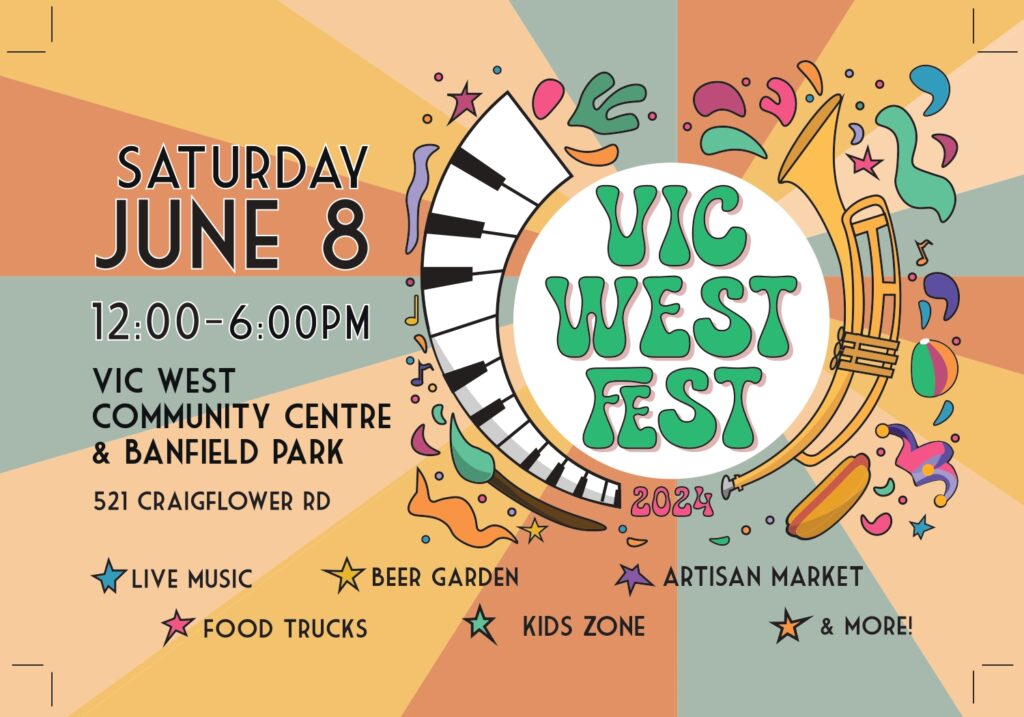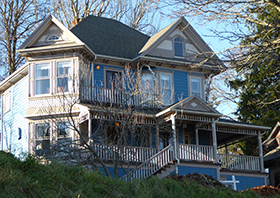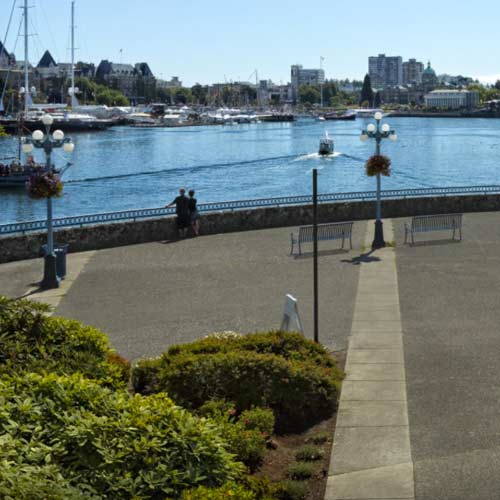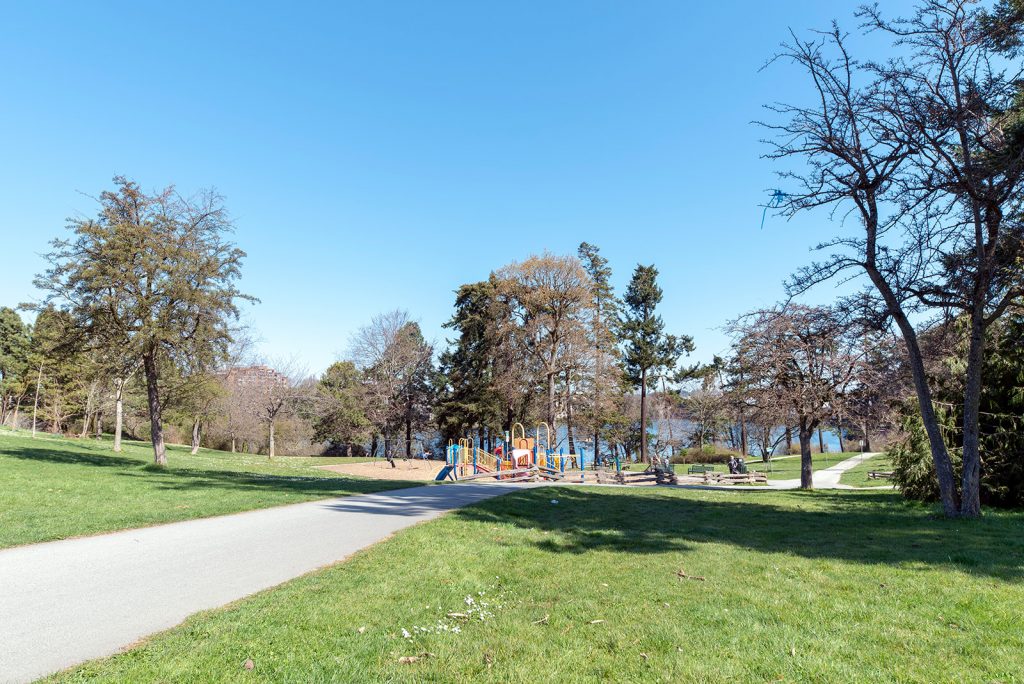Vic West: It’s your community!
Events
Join us on June 8th from 12-6 for Vic West Fest! Live music, beer gardens, kids area, food trucks, artisan market and more!
Victoria West History
Vic West History 2020 marks a couple of major anniversaries for the VWCA, including 90 years since the association was originally founded, 50 years since we became a registered society, and 10 years since we officially took over the community centre! To celebrate these milestones we want to showcase important, people, places, and changes that have helped make Vic West the vibrant and diverse community it is today. Vic West is steeped with local history and plays an important role in the development of Victoria as a whole. We’re so proud to be a part of this community and can’t wait to share what we’ve found with you! This project would not be possible without the help of… City of Victoria The Victoria Heritage Foundation City of Victoria Archives BC Archives E&N Division of the CHRA Wise Victoria Mortgages Victoria Harbour History History of the Vic West Community Association By: Justine Semmens, VWCA President The area known to residents as Banfield Park has played a vital and foundational role in the development of the community of Victoria West. Known historically as ‘Bonze Beach,’ the waterfront and meadow leading up to Craigflower road has served as a focal point for the community virtually from the inception of permanent non-Indigenous settlement in the region. The community centre, for its part, and in one form or another, has been its anchor. The story of the Victoria West Community Association gets its start with Charles Frederick Banfield (1877-1959) and Dr. Melbourne Raynor. Both men were a part of the Vic West Men’s Brotherhood. Dr. Raynor wanted to provide a healthy place for Victoria West residents, including safe areas for children to play and assistance for the area’s elderly. Banfield, who was born in Saanich to British immigrants, built his home in Victoria West in 1909 (402 Skinner St). Employed first by the British Colonist (the ancestor of the Times Colonist newspaper) and then by the Crown as the King’s Printer, Banfield was Victoria West’s first resident to be elected as a city alderman. He was deeply involved with the community. In addition to founding the Gorge Vale golf course and helping to establish the Fernwood Athletic association, Banfield joined the Victoria West Men’s Brotherhood in 1925, becoming a pivotal member. The Brotherhood was established around 1915 as a social club and veteran’s group. Meetings were initially held at the rented athletic hall on Catherine Street and later at Semple’s Concert Hall. The Brotherhood acquired Victoria West Park, preserved Gorge Park and saved the now public areas on Elk Lake from housing developments. The organization was also involved in school projects, picnics, and helping out the poor through charity concerts and other means. Committees, in the first two years, included the “House,” Parks and Playgrounds,” “Streets,” “Health and Morals,” and the “Athletic Committee” in charge of football, lacrosse, and baseball teams. In 1918, the “Production Committee” started Victoria’s first garden plots by leasing land on part of the old Songhees reserve. They delivered food hampers from these gardens to the homes of Destitute families. These hampers also included bacon from the pigs raised by the “Piggery Committee.” The original clubhouse was located directly adjacent to the present-day Victoria West Community Centre building. In 1930, the Brotherhood expanded to welcome women. It changed its name to the Victoria West Community Association, effectively establishing our community’s first full-fledged community centre, with the community association serving as one of its major projects. It has been an essential feature of Craigflower village ever since. Disrupted shortly in the 1940s as Victorians focused on the war effort, Banfield helped to revive the community association in 1947. In 1948 he successfully spearheaded a campaign to acquire the land around the community centre to turn into a park. The park was named in his honour. 521 Craigflower Road With the passage of time and economic hardship in the region, the community association faded briefly from Victoria West. The current association was formed under the societies act in 1970 as the Victoria West Community Development Association. In 1976, the VWCDA acquired federal funds to build a new, larger, more functional community centre. The present-day 8,000 square foot community centre was opened on April 9, 1978. It was run as a three-way venture between the City of Victoria, the VWCDA and the YMCA. The YMCA remained on the site for over thirty years until, in 2010, the community association assumed responsibility for the centre. Since then, the community centre has served as an important hub for community gatherings, youth outreach, early childhood education, adult fitness, and continuing education. In fact, in 2014, the Victoria West Community Centre was the busiest hub of activities sponsored by the City of Victoria. Doubtlessly, the community centre is the most prominent project of the Victoria West Community Association. Other projects include placemaking, food security, and community development. The Victoria Heritage Foundation also has more history of Vic West. A history of the Songhees People and Vic West By: Justine Semmens, VWCA President The Coast Salish people and their ancestors have called the coastal regions of the Salish Sea home for more than five thousand years. The area is known today as Vic West resides on the traditional territories of the Lekwungen People, known today as the Songhees and Esquimalt First Nations. These Nations share common cultural and linguistic heritage with other Northern Straits Salish speaking peoples such as the W̱SÁNEĆ,T’Sou-ke, Semiahoo, Samish, and Lummi First Nations. As a result of the violent process of colonization, Lekwungen is now considered a ‘sleeping language.’ Thanks in large part to the leadership, teaching and advocacy of Elder Dr. Elmer Seniemten George, one of the last fluent speakers of Lekwungen, the Songhees and Esquimalt people have embarked on the journey to reawaken their language. Since long before European settlement and colonization in the Pacific Northwest, the Lekwungen people have governed themselves according to family or clan through a patrilineal kinship system, which means that inheritance and [...]
Walking Trails
Walking Trails Spinnakers to Barnard ParkVictoria West Walk #3 (as revised at Jan. 18, 2004) A one-way walk starting at Spinnakers’ Brew Pub and ending at the border with Esquimalt just west of Barnard Park. West Song Walkway – Mary – Russell – Rainbow Park – Robert – Seaforth – Maitland – West Song Walkway again – Barnard Park. Start at Spinnakers’ Brew Pub. In the nineteenth century, there were native fishing shacks where the Pub now stands. Spinnakers opened in 1984 in a refurbished and enlarged house built in 1918. The Pub is next to Lime Bay, where a lime kiln once operated to provide construction materials for the growing city. Lime Bay once extended almost to the Esquimalt & Nanaimo Railway tracks but was partially filled in in the 1950’s. The name West Song Walkway is derived from “Songhees,” the native band who lived here from 1850 to 1911, and “West Bay,” where the walkway ends. Follow the walkway west to Mary Street, and turn up Mary. At the foot of the street a powder magazine was established in the late 1800’s. Number 211 Mary Street was the home of Elizabeth Bland and her husband. Her parents headed a wealthy family that owned Halfway House, an inn midway between Fort Victoria and Esquimalt Harbor. Halfway House was where the camels were quartered that were tested as beasts of burden in the Cariboo during gold rush days, 1858-1861. Across the street, at 222 Mary, is an attractive brick house built in 1890 by a Mr. Wilkinson, eldest son of the Anglican Bishop of Northern and Central Europe. The house was built of local brick. It has been restored, and the surrounding townhouses built to harmonize with it are one of Victoria’s better examples of preserving the old while building new. Farther up Mary Street on the left is Ormond’s Biscuit Factory. Originally it made crackers and biscuits, but then bread was added to the product list, and by 1901 the factory was baking 40,000 loaves a month. The factory was ahead of its time in making deliveries. Delivery customers included the Work Point Barracks, enabling Ormond’s to call themselves, “Bakers to Her Majesty’s Troops.” A polar expedition bought pilot biscuits here, and dog biscuits for their huskies. Though not officially designated, the factory is one of the few remaining industrial heritage buildings in Victoria. Go up to the railway tracks and turn left to get to Russell Street. The tracks belong to the Esquimalt & Nanaimo Railway, constructed by James Dunsmuir to bring coal from his mid-Island mines to Esquimalt Harbor. In 1886 the line was extended to Russell Station, and later to its present downtown terminus at Store Street. Robert John Russell arrived in 1853 on the Norman Morison. As an employee of the Puget’s Sound Agricultural Company (PSAC), he bought land at 1 pound an acre and later sold parcels in what he called the Springfield Estate. Land prices rose during the Fraser River and Cariboo gold rushes but collapsed in 1864 when the gold boom proved short-lived. Speculators were left with land inventories that could not be sold until the economy improved. At the foot of Russell Street and extending to Robert Street is Rainbow Park. The Canadian Navy was established in 1910. Its first ship was HMCS Rainbow, built in England in 1891 and sailed from Portsmouth around Cape Horn to Victoria. The Rainbow was scrapped in Seattle in 1920. A rowing club was built here for the James Bay Athletic Association (JBAA) in 1938, and the building later became the home of the Rainbow Sea Cadets. A pillar from the old building is still visible in the rocks at the water’s edge. Modern-day Rainbow Estates were built here after the old JBAA building was torn down. Continue to Robert Street. At the end of the street is Coffin Island, a First Nations burial site. The east side of Robert Street was owned by the Muirheads; the west side, by the McBeaths. Number 223 Robert was the family home of James Muirhead, Jr., whose father owned a sawmill downtown close to Capitol Iron. The house was designed by Thomas Hooper. Restored by the present owner, it has the distinction of being the only privately-owned house in British Columbia designated a National Historic Site. Across the street, at number 230 Robert, is another Thomas Hooper design. Among its interesting features is a bay window angled to gain a water view. The view is now obscured by trees. The house was built for Duncan and Ursula McBeath, but Ursula did not like it. The couple moved up the street to another house, at the corner of Seaforth, but it was not the one that stands there now. When their house came down in 1978, the interesting house that now occupies the site was moved from the corner of Seaforth and Maitland one block away. This house, called Huntingdon Cottage, dates from 1888. In 1907 it was sold to Duncan and Eliza Stewart, who influenced a change of street names in the neighbourhood. William Street became Seaforth, and James Street became Maitland. Duncan Stewart was from Seaforth, Ontario, and Eliza was from Huntingdon, Quebec (which is near Maitland, Ontario). Number 614 Seaforth is built in the bungalow style. The north-facing verandah is reminiscent of India, where this orientation offered the most protection from the sun. The Princess Patricia apartments stand at the junction of Seaforth and Maitland. They occupy the site of the former home of Captain James Troup, who managed the BC Coast Steamship Service from 1901. From here he could watch his ships enter and exit the harbor. It was he who initiated the practice of naming the fleet for princesses. Descend steps at the foot of Maitland to a gazebo on the West Song Walkway. Henry Simpson once owned the land where the gazebo stands. He came over on the Norman Morison in 1853 with John Russell. A baker, Simpson made his home on [...]
VWCA Projects in the Community
2021202020192018201720162015 VWCA Childcare Expansion VWCA Childcare Expansion The VWCA has spent the past five years advocating for additional childcare spaces in the community. We are pleased to announce that an additional 32, 3-5 year, childcare spaces will be available in the community at our new Sherk St. location. This is thanks to the tireless efforts of the VWCA's Executive Director, Johanne Thompson, former Childcare Manager, Kate Thring, and the VWCA Board of Directors. Coming Together Vic West Coming Together Vic West In response to the Covid-19 pandemic, the VWCA created a program to help connect neighbours and ensure the most vulnerable members of our community were able to receive support and supplies during the spring of 2020. The VWCA also compiled a local business list to help ensure that businesses that remained open or that had transitioned to online sales could still connect with the community. Emergency Childcare Services Emergency Childcare Services In response to the Covid-19 pandemic, the VWCA provided childcare for essential workers in the community. This program lasted from April 2020 - August 2020. This program would not have been possible without the hard work of Beth Hume and Asha Willis. Vic West Community Live Series Vic West Community Live Series In response to the Covid-19 pandemic, the VWCA began the "Vic West Community Live Series" to help connect with the community. Events hosted include, Craft Time with Asha (featuring the VWCA's own Asha Willis), Gardening Q& A (featuring the VWCA's own Louise Kelaher), How to Sew a Face Mask, Accupressure at Home, Cooking Together - With Children, and Conversations with City of Victoria Staff & Council. Free Little "Seed Libraries" Free Little "Seed Libraries" In response to the Covid-19 pandemic, the VWCA Food Security Collective partnered with the Victoria Seed Library to distribute 500 packages of free vegetable seeds in Vic West's eight free little library boxes. Seed supplies were scarce so the FSC's Committee Chair, Patti Parkhouse, jumped into action to support Vic West food growers. A special thanks to Kristy for her help with this project. Get Growing Vic West Get Growing Vic West The VWCA was proud to be a part of The City of Victoria's Get Growing program. We provided over 3000 seedlings to community members over two distribution days. A huge thank you to Patti Parkhouse, Katie, and all the other volunteers who helped make these days possible. VWCA Anniversary Celebrations VWCA Anniversary Celebrations The VWCA celebrated a number of anniversaries in 2020. It was the 90th anniversary since the VWCA was first founded, 50 years since we became a modern society, and 10 years since we took over the Vic West Community Centre. To celebrate these huge milestones, the association presented the history of the Vic West Community. More details can be found on our website. A huge thank you to Justine Semmens, Veronique Plante, and all the other volunteers involved! With the help of Simon Trudeau, the VWCA also created a time capsule video interviewing long time residents of the community. It can be found here! https://www.youtube.com/watch?v=LtHs4wol084&t=34s Logo Redesign & Rebranding Project Logo Redesign & Rebranding Project In 2019 volunteers on the VWCA's rebranding committee help facilitate a logo redesign for the Community Association. The logo was unveiled at Vic West Fest. A huge thank you to Supriya Crocker, Sean Battistoni, Julia Schenck, and Sindy Martinez. Vic West Fest 2019 Vic West Fest 2019 The VWCA expand its annual community celebration, Vic West Fest, to feature local businesses and artists as well as some amazing community performers. A huge thank you to Veronique Plante, Paul Roots, Ben Fleet, and Everett Piper who helped make the event possible. Vic West Community Garage Sale Vic West Community Garage Sale The VWCA hosted its first-ever community garage sale. We had over 30 vendors and hundreds of members of the public attend. A huge thank you to Chris Bryson and Julie Bull for their coordination efforts! Program Registration Software Program Registration Software In September 2019, the VWCA launched its new online program registration software. Participants can now register for programs from the comfort of their homes. A huge thank you to Jamie Boyd and Chris Bryson for coordinating and managing this project! Out of School Care Expansion Out of School Care Expansion The VWCA started their official out-of-school care program in September 2019. In November 2019 we took over the Boys & Girls Club operations to offer childcare at both the Community Centre and Vic West Elementary. A huge thank you to Asha Willis and Johanne Thompson for their flexibility and dedication to kids in our community. Community Speakers Series Community Speakers Series The VWCA began hosting their community speakers series! We had one speaker present each month on a variety of different topics. A huge thank you to all of the speakers that have participated. VWCA Strategic Plan VWCA Strategic Plan In 2018 the VWCA adopted its 5-year strategic plan. Childcare Task Force Childcare Task Force In 2018, Vic West was announced as a pilot project for a new, provincially funded childcare building. The Vic West Community Association partnered with SD61 to create new spaces for kids in Vic West! Vic West owes a huge thanks to Mayor Lisa Helps for bringing the VWCA, SD61, and the Province of BC together through the mayor's taskforce on childcare. This would have been impossible without her help. We'd also like to give a huge thank you to Johanne Thompson, Kate Bryson, and all the other VWCA staff and volunteers who have helped with this project. Boulevard Gardens Boulevard Gardens In 2018, the Vic West Food Security Collective promoted a Citywide personal food growing survey through their volunteer list and various other contacts. The survey supports the City of Victoria Official Community Plan Section 17.3 - Assess neighbourhood food system features and needs as part of local area planning. Vic West was the neighbourhood with the most completed surveys and won $500 to install a boulevard garden. Community Centre Electronic Message Board Community Centre Electronic [...]




